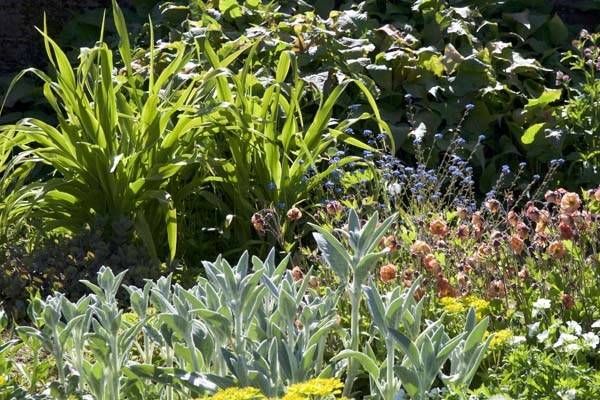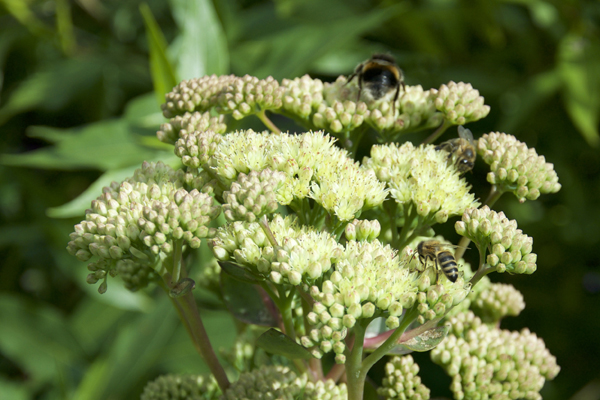Acanthus (Bear's Breeches) Plant & Care Guide
Despite being a bit of a “thug”, these stately plants add a touch of grandness to a border. Both varieties are summer flowering plants that produce white flowers. These have two floppy lips that shelter under a shell-like purple hood. The flowers are then carried up a sturdy stem to form a thick spike that rises elegantly from a broad, slowly spreading clump of leaves.
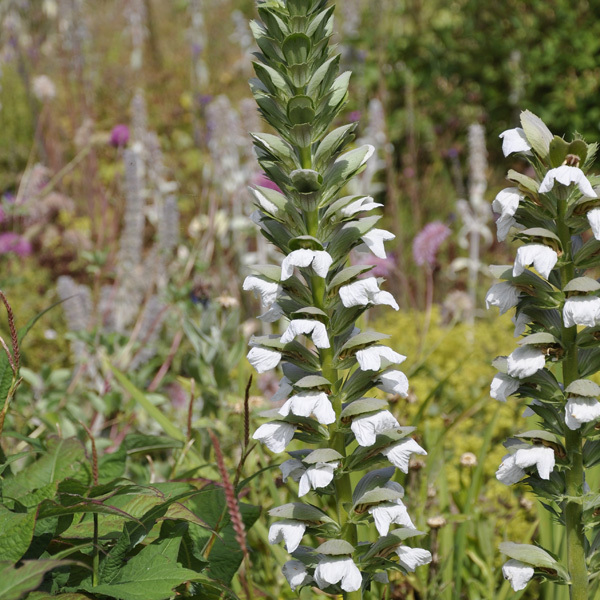
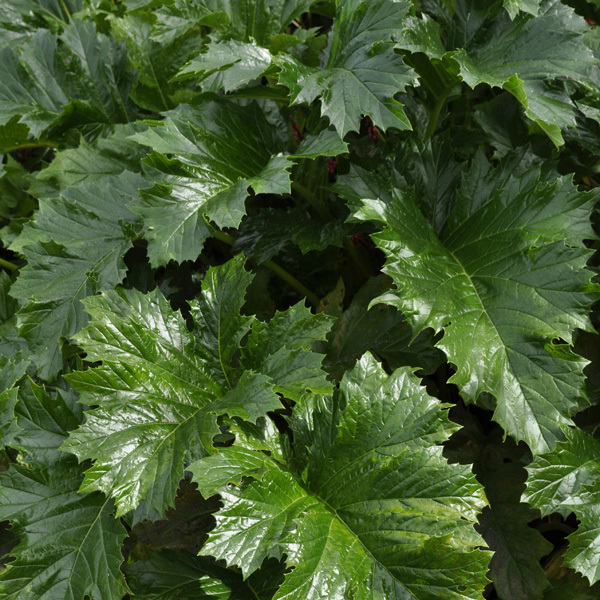
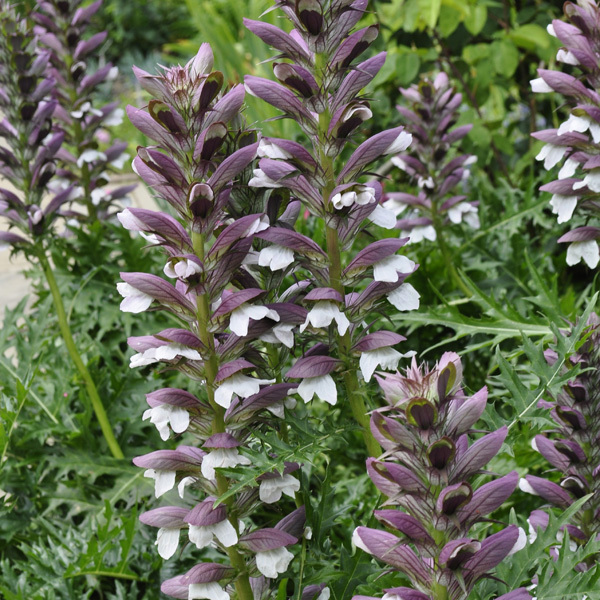

Left to right: Acanthus mollis 'Rue Laden', Acanthus mollis, Acanthus spinosus, Acanthus mollis 'Hollard's Gold'
-
When Do Acanthus Flowers Bloom?
It’s a summer flowering plant, and the upright spikes of flowers start to appear around mid-summer. Carried up sturdy flower stems, the large flowers have rather floppy petals that are shielded underneath by a spiky, green bract and covered with a long, gently dome hood-like bract that can become purple as the flower ages. Lasting for months, once the flowers have finished a round seed pod will often be left behind.
-
Acanthus Leaves & Appearance
This hardy perennial forms mounds as it grows, with long stalks. The leaves of this architectural plant are particularly handsome. The shape of leaves most generally found in gardens can be divided into two, smooth edged ones and spiky tipped ones. All are glossy, and although some have little spiky tips at the end of the deeply cut foliage, the spikes are not vicious. In time these will form a big, vigorous clump that is liable to wonder about the garden, so careful positioning is required.
-
Where Does the Acanthus Come From?
Originating from the Mediterranean, their beauty was appreciated in Greek and Roman times, where the leaf form can be seen carved around the top of tall colonnades. The alternate name “Bear’s Breeches” is attributed to the hairy leaves and stalks. It has been grown in our gardens since medieval times, largely for medicinal purposes, and during the 18th century it was still used for medicine.
In modern times, you can get an Acanthus for sale as root-balls or grown plants in pots. Because of their very hardy nature, you can buy these perennials online with little worry for the plant’s condition on arrival.
Acanthus Planting Guide
-
Where To Grow Acanthus Plants
Acanthus seems to grow anywhere. It does not seem to matter whether the soil is sandy or a well-drained clay. They don't, however, like wet soil. The roots will simply rot. As they originate from hot parts of Europe they do need sun and being vigorous they do need to be grown in a position where it won't be necessary to move them. If any roots are left in the soil when they are dug up, these will quickly regrow.
-
How to Plant Acanthus
Acanthus like most perennials are best planted in the fall, but it can also be planted in spring. If you plan to buy perennials online, take the time to deliver into account to ensure you receive it at the time you plan to plant it.
Bear’s Breeches seed pods require plenty of time and warmth to germinate and establish its tough roots. Generally, it’s easier to buy an established plant grown by a nursery. Most Acanthus for sale generally come in pots, but some may sell it as a root-ball. Acanthus can also be grown in a pot, which is useful if you want to move it around the garden. Because of the roots, you will want a tall, fairly wide pot with drainage holes.
To plant, dig a hole at least twice the size of the pot or root-ball but do not adjust the depth, this is so the plant remains at ground level. If the leaves start into grow early, late frosts can knock the new growth back. Don't worry, the roots are so deep, the plant won't be killed.
Acanthus Plant Care
Once established, Acanthus are extremely easy to grow, needing almost no attention. They are also hardy and will bounce back from frosts so long as the roots live on. You may want to water it routinely after planting to encourage growth.
-
Pruning
Cutting the stems back after they’ve flowered encourages new foliage growth. The entire plant can also be cut back to the ground level in the fall or in the spring to make room for new growth.
-
Pests
Slugs and snails like to feed on the foliage, but these pests tend to avoid plants put in well-draining soil and sunny locations. Powdery mildew can also affect the plant in dry conditions.
-
Is Acanthus Invasive? Will it Overgrow in a Garden?
Because the plant is vigorous, it can regrow into new plants if a part of the root remains. Some consider these plants to be invasive, but Acanthus plants do not spread far on their own. Should you ever want to move or remove the plant, flooding or smothering the area can prevent any remaining roots from growing back.
-
What Flowers are Acanthus Are Great With…
I've seen them filling the edges with paths and walls, in borders that are so narrow no other plant is needed. Silver-leaved plants such as Artemisia and Stachys look good with Acanthus. All will grow in a dryish situation and the foliage will complement each other. Grasses as a backdrop or either side will also provide contrast in shape.
